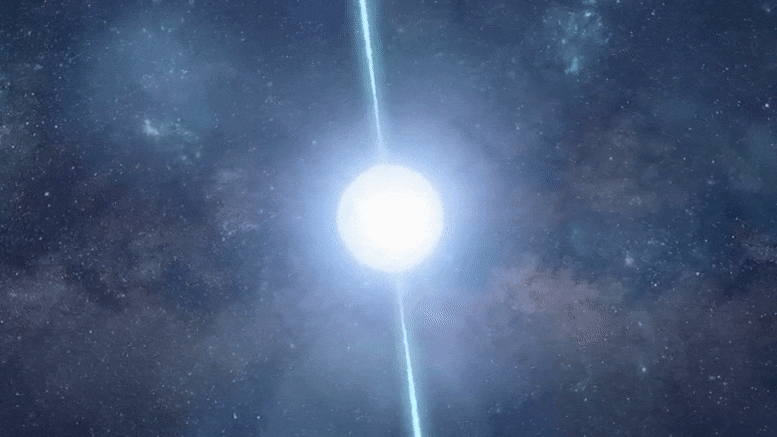The assessment: This is a collision of matter and antimatter in the vicinity of black holes or collapsed neutron stars known as magnetars

Mysterious fast radio bursts are among the most confusing phenomena in the universe, they release in one second as much energy as the sun emits in a year. Researchers at Princeton University, the US Department of Energy's Princeton Plasma Physics Laboratory and the SLAC National Accelerator Laboratory have now imagined and proposed an inexpensive experiment to create and observe the early stages of this process in a way previously thought impossible using today's technology.
Celestial bodies such as neutron stars, or collapsed stars, called magnetars (magnet + star) surrounded by strong magnetic fields are responsible for the impressive bursts in space. According to the theory of quantum electrodynamics (QED), these fields are so powerful that they turn the vacuum of space into an exotic plasma made of matter and antimatter in the form of pairs of negatively charged electrons and positively charged electrons. Emissions from these pairs are thought to be responsible for the strong fast radio bursts.
The matter-anti-matter plasma, "pair plasma", is opposed to the normal plasma that feeds fusion reactions and makes up 99% of the visible universe. This plasma is made of material in the form of electrons and atomic nuclei with a much larger mass, or ions. Electron-positron plasmas consist of particles with equal mass but opposite charges that are subject to annihilation and creation. Such plasmas can exhibit quite different collective behavior.
"Our lab simulation is a small-scale analog of the magnetar environment," said physicist Keenan Chu of Princeton's Department of Astrophysical Sciences. "This allows us to analyze the pair plasmas described by QED," said Cho, first author of a paper recently featured in Physics of Plasmas, and also first author of a paper in Physical Review Letters that the current paper extends.
Physicist Kenan Chu with images of a fast radio burst in two galaxies. The images on the left show the galaxies, and on the right are digitally enhanced images. Dashed oval lines indicate the location of the bursts in the galaxies.
Credit: Qu photo by Elle Starkman; galaxy photos courtesy of NASA; collage by Kiran Sudarsanan.)
"Instead of simulating a strong magnetic field, we use a strong laser," Cho said. "It converts energy into a pair plasma using what we call QED cascades. After that, the plasma of the pairs changes the laser pulse to a higher frequency," he said. "The exciting result demonstrates the chances of creating and observing QED pair plasmas in laboratories and enabling experiments to verify theories about fast radio bursts."
Laboratory-produced pair plasmas have been created before, notes physicist Nat Fish, professor of astrophysical sciences at Princeton and deputy director for academic affairs at PPPL who is the principal investigator on this study. "And we think we know what the laws are that govern their collective behavior," Fish said. "But before we actually create a pair plasma in the laboratory that shows collective phenomena that we can study, we won't be able to be completely sure of that."
"The problem is that it is very difficult to observe collective behavior in paired plasmas," he added. "That's why it was an important step for us to think about it as a joint problem of creation and observation, recognizing that an excellent method for observation eases the conditions regarding what must be produced and leads us to a more practical facility."
More of the topic in Hayadan:
- "Another proposal for a possible process for chemistry leading perhaps to life processes"
- About the great gamma ray burst that accompanied the death of Arthur C. Clarke
- A strange, repeating radio signal has been detected near the center of the Milky Way
- Astronomers discover a powerful short burst of radio radiation from a place relatively close to the Milky Way
- How black holes devour stars
